Greetings everybody. Sorry for not writing a new blog post in a week, I was researching and executing SRT on my PC, as well as setting up Windows again and benchmarking. Everything should be fine now. Much better HDD speed. Look! 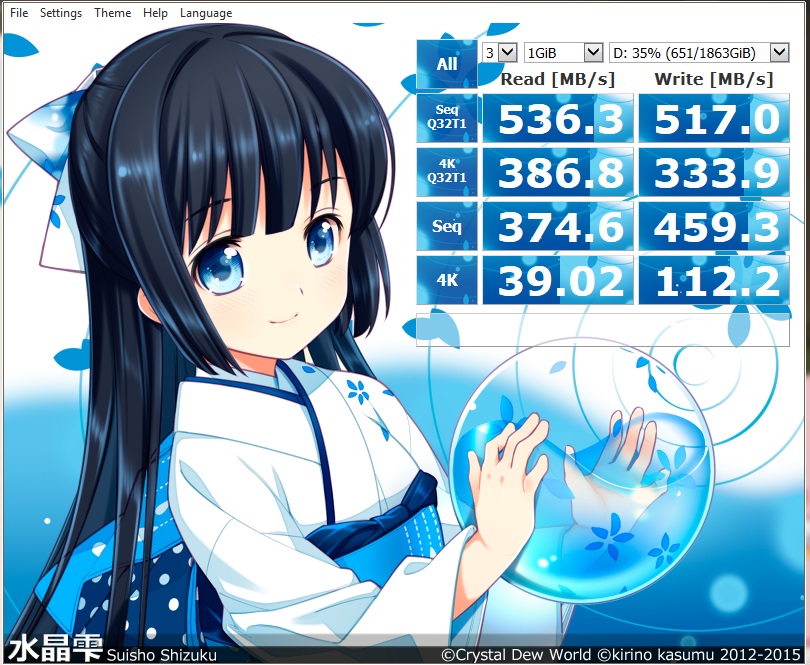 Anyway, into today’s topic. Even though cooling has always been an essential part of any enthusiast setup, beginners may not be too familiar to concept. Cooling’s main purpose helps keep your CPU (and other components) from overheating, which will make your computer run more stably and degrade slower (it’s also often said that your components will “work better” since lower temperatures will help electricity conduct better, but the truth is that the difference in performance is negligible).
Anyway, into today’s topic. Even though cooling has always been an essential part of any enthusiast setup, beginners may not be too familiar to concept. Cooling’s main purpose helps keep your CPU (and other components) from overheating, which will make your computer run more stably and degrade slower (it’s also often said that your components will “work better” since lower temperatures will help electricity conduct better, but the truth is that the difference in performance is negligible).
However, now that the temperature threshold until a CPU overheats has gotten high enough, that has become an afterthought. But even so, nowadays, cooling is more important than ever. Why? Overclocking. That’s why newcomers often overlook it. So, with that out of the way, today I’ll introduce to you the different kinds of system cooling I know out there, starting with the more common ones, then we’ll get to the crazier ones later.
Air Cooling (Heatsink Cooling)
 Air cooling should be the form of cooling you see the most. Why? Because not only is it the cheapest form of cooling discussed here, but also because most if not all stock cooling systems (including stock CPU coolers and stock case fans, but I’ll focus on CPU coolers in this article) are air-cooling solutions. That being said, air cooling is often regarded as the simplest, least efficient, and perhaps “ugliest” form of cooling.
Air cooling should be the form of cooling you see the most. Why? Because not only is it the cheapest form of cooling discussed here, but also because most if not all stock cooling systems (including stock CPU coolers and stock case fans, but I’ll focus on CPU coolers in this article) are air-cooling solutions. That being said, air cooling is often regarded as the simplest, least efficient, and perhaps “ugliest” form of cooling.
However, in reality, air coolers generally do better than liquid coolers at the same price range (more expensive air coolers can cost just as much, if not more, than a cheap liquid cooler). For example, the Hyper 212 Evo (earlier version of the Hyper 212X, my personal cooler, pictured above) does just as well as the Corsair H60 (a cheap liquid-cooling system) temperature-wise, but the Hyper 212 currently retails at $31 on Amazon whereas the H60 sells at $65 on Newegg.
Structure-wise, a heatsink CPU cooling system consists of a heatsink, which is usually made of aluminium sheets, plus copper heatpipes and base (sometimes the copper components are also plated with nickel for color consistency), and a number of fans. There are three basic forms of CPU heatsinks: Mini-ITX heatsinks, single-tower heatsinks and dual-tower heatsinks.
- Mini-ITX heatsinks are the smallest and cheapest of all, and normally only supports one small (80-90mm) fan, with one of such fans bundled. They are called so because they are normally built to fit in small, thin Mini-ITX cases (which are commonly used as HTPCs or office PCs). The stock coolers are these. They are also unique because with these coolers, it’s the fan that will face the side/window of the case, instead of the top of the heatsink.
- Single-tower heatsinks (like the Hyper 212X above) have only one large heatsink, and they usually support 2 120mm or 140mm fans, though normally only one is bundled. These coolers cool better than Mini-ITX heatsinks, and are easier to switch out the fans, but they will only fit in proper cases.
- Dual-tower heatsinks (like the Phanteks PH-TC14PE) have two blocks connected together with the base and heatpipes. They usually support 3 120/140mm fans (one between the two blocks, and one on the side of each block), and normally 2 are bundled. These coolers are the biggest and most expensive, and most likely will only fit in full-tower cases, but they cool so efficiently that they are regularly compared to liquid coolers.
- Note that air coolers may or may not come with fans (since not using fans will give zero noise), and there are a lot of “quiet” coolers out there. However, even a fanless cooler may support fans, if it’s made in the regular form factors.
How an air cooler works is pretty simple. First, the cooler’s base will connect with the CPU through thermal paste (which acts both as glue and as something to fill the “microholes” on the base’s and the CPU’s surface. Thermal paste quality does affect cooling performance too, but it’s not nearly as important as the cooler itself or even the fan. By the way, my personal favorite thermal paste is the Arctic Cooling MX-4, though I’m currently using Arctic Silver 5 because of some circumstances). Then, the heat from the CPU will transfer through the heatpipes and into the aluminium sheets, all of which are highly heat-conductive. Then, if the cooler has a fan, it’ll blow air into the heatsink, cooling it. But even if it doesn’t, the heat will just radiate naturally.
Some Air Cooling Brands Worth Considering
Oh dear, when talking about cooling brands, there are a lot! However, some of my favorites, when it comes to air cooling, are:
- Cooler Master is the most popular air cooling brand, as well as my personal favorite. Their midrange Hyper 212 series is nothing but legendary, and their case fans are always top-notch for the price, especially the SickleFlow and JetFlo series. Can’t say the same for their other air coolers though… they always seem to have a very hard time trying to beat their own product.
- Noctua is an extremely well-known brand for premium air coolers and case fans, with their signature “ugly literal-feces color” (though some people actually like it, and most others, while not liking the color itself, still regard it as the “color of premium”). Anyway, their air coolers and case fans are all very highly-regarded, but are also normally ultra–expensive.
- Phanteks is a lesser-known (compared to Noctua), but also critically-acclaimed brand when it comes to case fans and air coolers (as well as computer cases, by the way). They currently have the highest-rated air cooler, as well as one of, if not the strongest radiator fan.
- Thermalright is also a very good option, especially for those on a budget (though don’t expect really cheap products). While their name may sound like a Chinese knock-off of the more popular Thermaltake, they are actually just as legit of a company, and actually does better than the former, in my opinion. Thermaltake seems more like a “gaming components” company rather than a true cooling company for me, and IMO they make meh products in the field of cooling and chassis, though they did try to go extreme multiple times.
Liquid Cooling
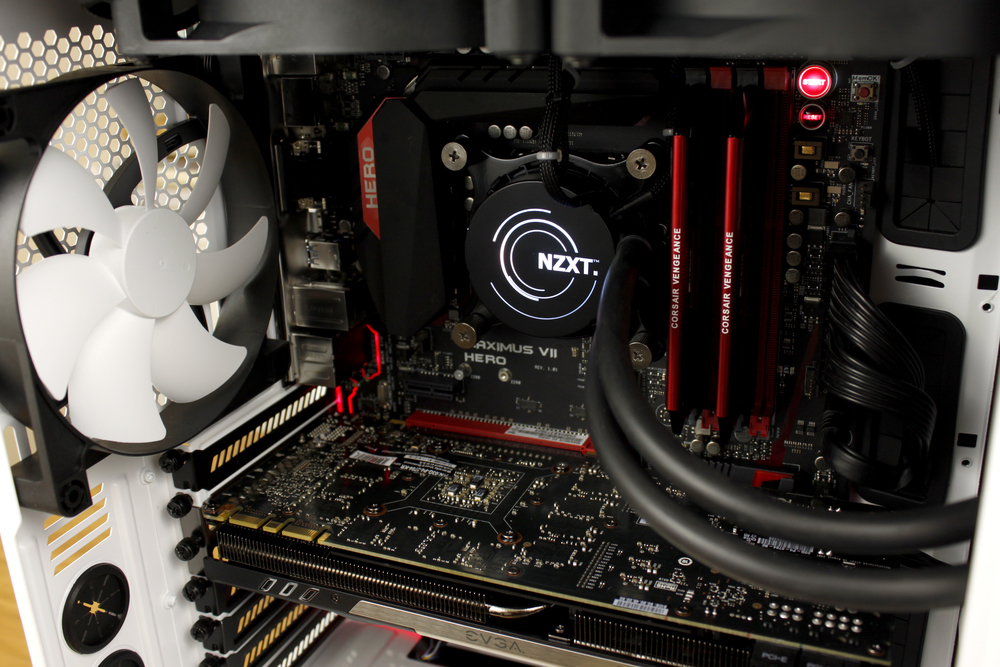 Liquid cooling is all the talk these days. I’ve seen many people with that “if it ain’t liquid cooling, it ain’t cool” attitude. Though, like I said above, a good air cooler may actually do better than a liquid cooling system at the same price. However, high-quality liquid coolers can cool the CPU (and other components) to levels air coolers can’t even dream of. But even if an air cooler can cool better than a liquid cooler on a budget, there’s another major reason to consider liquid cooling: aesthetics. For an enthusiast, making the PC looks pretty actually matters, and any liquid cooler will look LOADS better than any air cooler, because the waterblock will actually look like something that contains a high-tech core inside, and it’ll also occasionally have LEDs. On the other hand, a heatsink just looks like a boring block of metal.
Liquid cooling is all the talk these days. I’ve seen many people with that “if it ain’t liquid cooling, it ain’t cool” attitude. Though, like I said above, a good air cooler may actually do better than a liquid cooling system at the same price. However, high-quality liquid coolers can cool the CPU (and other components) to levels air coolers can’t even dream of. But even if an air cooler can cool better than a liquid cooler on a budget, there’s another major reason to consider liquid cooling: aesthetics. For an enthusiast, making the PC looks pretty actually matters, and any liquid cooler will look LOADS better than any air cooler, because the waterblock will actually look like something that contains a high-tech core inside, and it’ll also occasionally have LEDs. On the other hand, a heatsink just looks like a boring block of metal.
There are two main kinds of liquid coolers: All-in-One Coolers (also called Closed-Loop Coolers, abbreviated as AIO Coolers or CLC), and Custom Loops. I’ll use a CLC (like the Kraken X61 pictured above) to explain the basic parts of a liquid cooling system, since custom loops are often more complicated.
- All-in-One Coolers are basically the pre-build kits that they sell you. They are not customizable most of the time (though some kits, like the Swiftech H-240X, are expandable somewhat), and they usually don’t have the top-quality components that are used to build custom loops.
- Custom Loops are basically liquid-cooling systems that you have to build yourself. They may have better components and can be used to cool more than just the CPU (for example, you can use them to cool the GPU, or a second CPU, or if you are more hardcore, even chipsets). Some vendors do sell custom loop “kits” though. You know, like how some stores sell pre-built “custom” PCs.
So, this is how a liquid-cooling system works:
- First, the water (or a specialized coolant, which is really just distilled water mixed with some coloring most of the time) is stored in the reservoir (in CLCs, the reservoir is usually integrated into the radiator).
- Then, the water is pumped through the pipes with a… pump (again, in CLC and simpler custom loops, the pump is usually integrated into the reservoir, which in turn may be integrated into the radiator).
- Then, the water will go through the waterblock, which consists of a copper base and a water chamber. The copper base is connected with the CPU (or any component you want to cool, but I’ll just say “CPU” in this post for convenience) through thermal paste, and heat will transfer from the CPU to the copper base, which will be cooled by water in the water chamber.
- Then, the hot water will go through the radiator, which is basically an air cooler for the water, with a “heatsink” and fans.
- Finally, the water goes back to the reservoir and the process repeats. For dedicated reservoirs, when the water dries up (from vaporizing due to the heat from the CPU), you can add more water into the reservoir, or change the water altogether.
However, as cool (pun intended) as liquid cooling is, there’s a risk in using such a system: leaking! Everyone knows that water is harmful for electronics, and if, by any chance, the liquid cooling system leaks, your computer will be in grave danger, though with modern hardware it’s not necessarily irreversible. There are guides on how you can recover a computer from a leaked liquid cooler (provided you have an adequately durable piece of hardware) online, but I won’t discuss them here.
Also, since there are many things to consider when setting up a liquid cooling system, such as radiator size, fan support, reservoir form factor, fittings size, etc. I won’t discuss them here. This is just an introduction post, after all.
Some Water Cooling Brands Worth Considering
- EK should be the most popular name in the custom liquid cooling field, as well as perhaps the liquid cooling field in general. Most of the graphics card waterblocks you see (for example, the Ares III from Asus or the Hydro Copper series from Evga) are “EK-based”, and they also offer top-notch “custom liquid cooling kits” too, as well as liquid cooling components, of course. Plus, they also make some very serious radiator fans, like their VARDAR series!
- Swiftech is also a popular name in the custom liquid cooling industry. They are famous for their “semi-custom liquid cooling kits”, which are basically CLCs but with components usually not seen in CLCs, like dedicated reservoirs or the ability to expand the liquid cooling system to be able to cool the graphics card (or another component). Apparently they also make air coolers but those are not very well-known.
- Corsair, one of the most popular computer components brand in general, is also the most popular name in the CLC field. Their liquid coolers offer great performance while also don’t look too edgy.
- NZXT is another big name in the CLC field. While they are best known for their cases and case accessories, their CLCs are also just as, if not more serious than the ones from Corsair, though they may not be as budget-conscious. (Their Kraken X61 is widely-known as the best-performing “true” CLC (the ones from Swiftech don’t count since they can be counted as “semi-custom”), but it also costs considerably more than Corsair’s renowned H110). Plus, their coolers may just be the most elegant ones I have seen.
Kinetic Cooling
Kinetic cooling is an experimental form of cooling currently being developed by companies such as CoolChip and CoolerMaster. Even though there are no retail models of this kind of cooling yet, since it’s supposed to be part of the mainstream cooling market in the future, I thought I’d write a section on this. Basically, a kinetic cooler is like an air/heatsink cooler, except this time around the heatsink itself spins, also acting as a fan, instead of having a dedicated fan to cool it. This allows for better cooling performance in Mini-ITX cases (since you have the performance of a full-size heatsink and a fan, without the need to make up space for the fan, which in turn allows you to have a “flat” heatsink instead of a tall heatsink). It’s also advertised to have less noise, but we’ll need to wait until it’s publicly released to see how it fares.
Mineral Oil Cooling
This is a more extreme way of cooling your CPU (or your whole system, for that matter), but nowadays it’s become more popular and there are even stores that sell pre-built “aquarium” PCs like this (this picture was taken from Anphatpc, a computers store from Vietnam). Basically, instead of putting your system in a normal PC case, you’ll instead put it in a container full of mineral oil, a specialized non-conductive liquid, which will give you the cooling performance close to submerging the whole system in water, if water wasn’t electrically conductive. Plus, this kind of cooling is more of an “add-on”, as it doesn’t require an installation which takes any kind of “slot” (like fan headers) in the system, so you can actually use the above forms of cooling in conjunction with this. Needless to say, a liquid cooling system for your CPU together with this makes things pretty cool.
There are some obvious problems with this though, the biggest of all is that the computer will be really hard to move around and trying to upgrade/customize it will be a HUGE pain. Another is that it’ll take a LOT of time and money.
Also, apparently it’s possible to grow fishes inside a mineral oil PC, though I don’t have any concrete proof of this yet.
Peltier Cooling
Ok, enough with cooling your CPU. Now, let’s talk about ways to freeze your CPU!
Thermoelectric cooling, also called “Peltier cooling”, is when you use an electrical device (naturally called a “Peltier cooler”) to direct heat from one side to another. You attach the “cold” side to the CPU, and the “hot” side to a heatsink (or waterblock), and voilà! As simple as it sounds, this device can actually cools things to EXTREME levels, since it actively uses energy to redirect the heat, instead of passively radiating the heat using natural laws.
However, as cool as that tiny device sounds, like all extreme cooling devices, it has some SERIOUS risks:
- First, ironically, this powerful cooling device can OVERHEAT your CPU when you don’t take care! When the peltier device is active, the heat will be transferred from the CPU to the heatsink/waterblock, but when it turns off or fails, all that heat will be shot back into the CPU! This can easily overheat a CPU if there’s too much condensed heat, especially when the CPU is active. But even when you’ve turned the computer off, the CPU may still suffer from high temperature issues!
- Secondly, it uses a lot of power (more so than the CPU itself, even), which will require a better PSU, increase your electricity bill, and destroy the environment!
Liquid Gas Cooling
This is where things get a little bit… hardcore! For extreme overclockers, none of the aforementioned forms of cooling is enough, so they switched to a solution normally only found in a lab! And I don’t mean a computer lab.
Cooling with liquid gas has three main forms: phase-change cooling, liquid nitrogen and liquid helium.
- Phase-change cooling is the most mundane out of the three (oh, and I’m talking about regular phase-change systems here. Technically all three are phase-change cooling systems), and there are actually retail kits for sale for this. Basically, the main unit will compress a gas (or just air) into a liquid. Then, the liquid will be pumped into an unit connected to the processor to cool it, before vaporizing. The vapor may flow down again to repeat the cycle more efficiently.
- Although “normal” phase-change cooling is the safest form of liquid gas cooling, it still has some huge problems. First, the cooling system is HUGE, and will have to be put outside of your case, which also means that your case has to be open all the time, which in turn leads to a whole slew of problems that I don’t think I even have to introduce.
- Secondly, it’s also otherworldly expensive! We’re not talking about $50, like a great air cooler, nor $100, like a decent CLC here. We are talking about thousands of cooling dollars! For example, this unit costs as much as $1,900. No joke.
- Thirdly, this form of cooling is still more dangerous than air cooling or even liquid cooling, since the vapor from the process can become dew, which can wet your components, and there are no pipes to protect them this time around!
- Liquid Nitrogen cooling is just as it sounds: it’s a special phase-change cooling system using nitrogen. The highest end of retail phase-change cooling units offer this gas, or alternatively you can just build some kind of cup on the CPU then pour liquid nitrogen in, plain and simple. Going this far spawns problems so blatant that I won’t even state them, but the things that you should take special caution in is that:
- One, the liquid gas can “cool” your CPU so much it creates cold bugs! A “cold bug” is when the CPU is so cold it completely freezes and stops working altogether. Obviously, you don’t want this to happen. At all.
- Two, the gas can directly freeze YOU, and you most likely will have to take contact with it.
- Liquid Helium cooling is another “commonly” used cooling gas. It’s pretty much like Liquid Nitrogen, except it’s way more expensive, and it also requires way more expensive feeding equipments, since it boils even faster than nitrogen and thus can’t simply be “poured”. Instead, you’ll need specialized containers and feeding systems. Plus, this gas KILLS, literally, so watch out.
Again, thank you for reading and supporting me this far. Which cooling system will you go for in the future? Can you share your cooler with me? ^^ Also, sorry if this blog post was poorly written, but since I’m just a newbie who hasn’t got the chance to do any professional research on the matter, nor having any chance to actually experiment with any of the cooling systems here aside from air cooling, this is as far as I could do. >.< Again, sorry, and thank you very much!
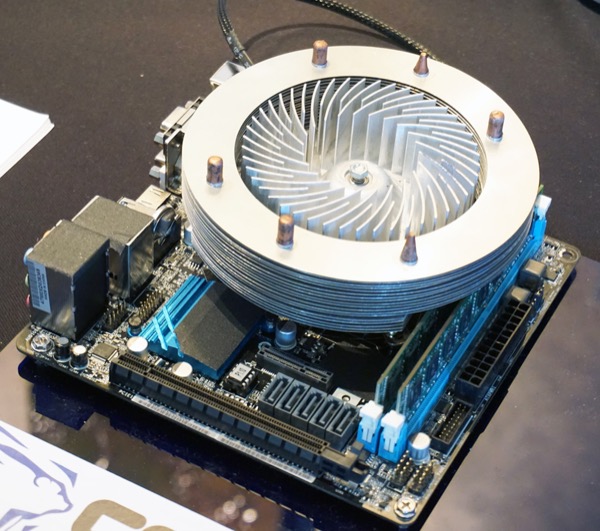
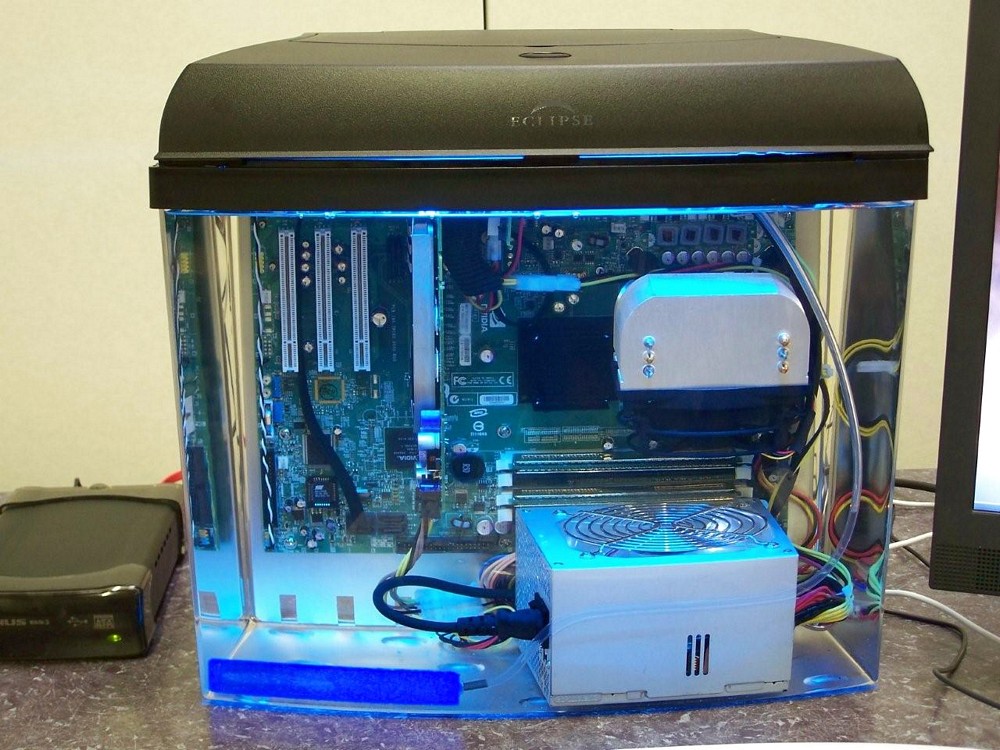
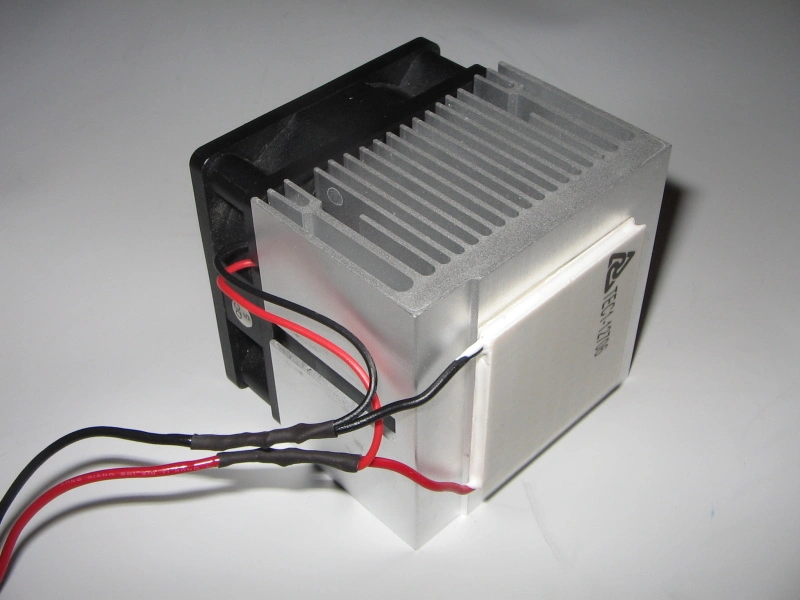
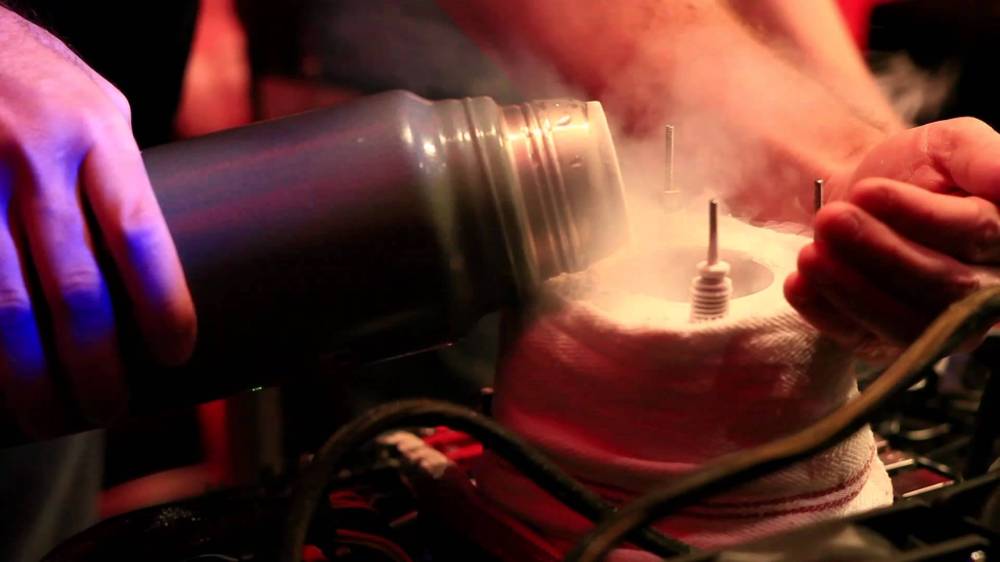
2 thoughts on “Frozen CPUs – An Introduction to Cooling”